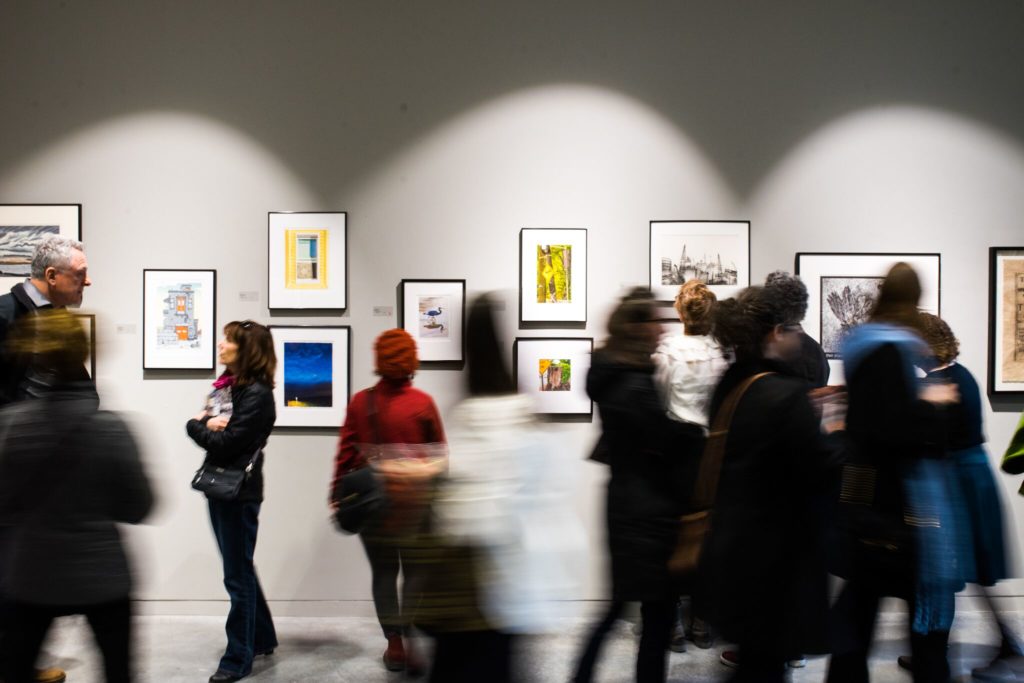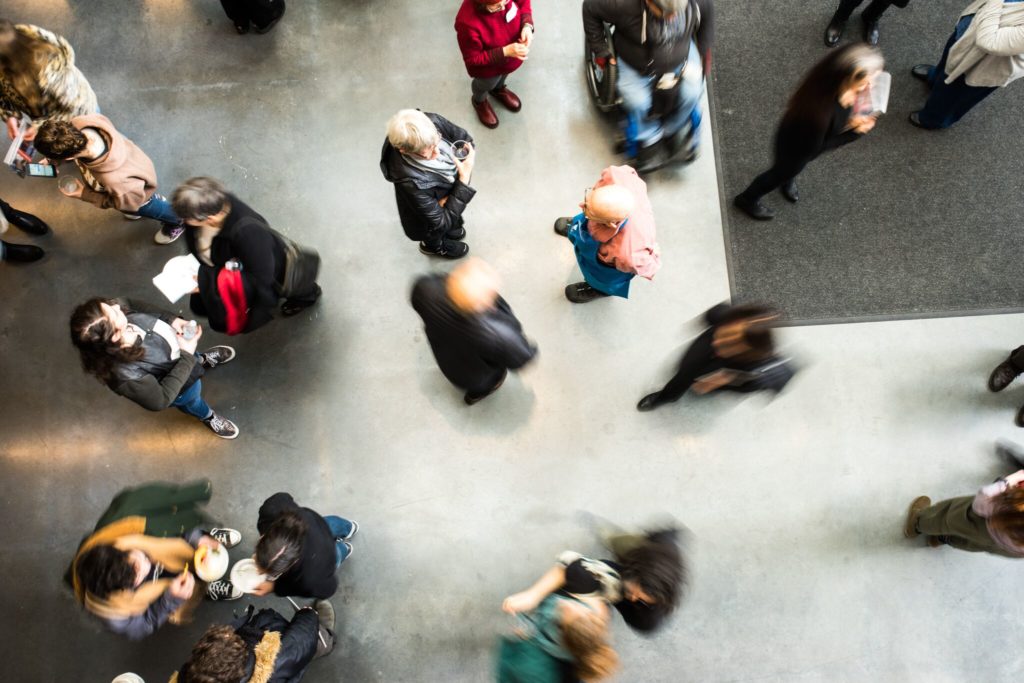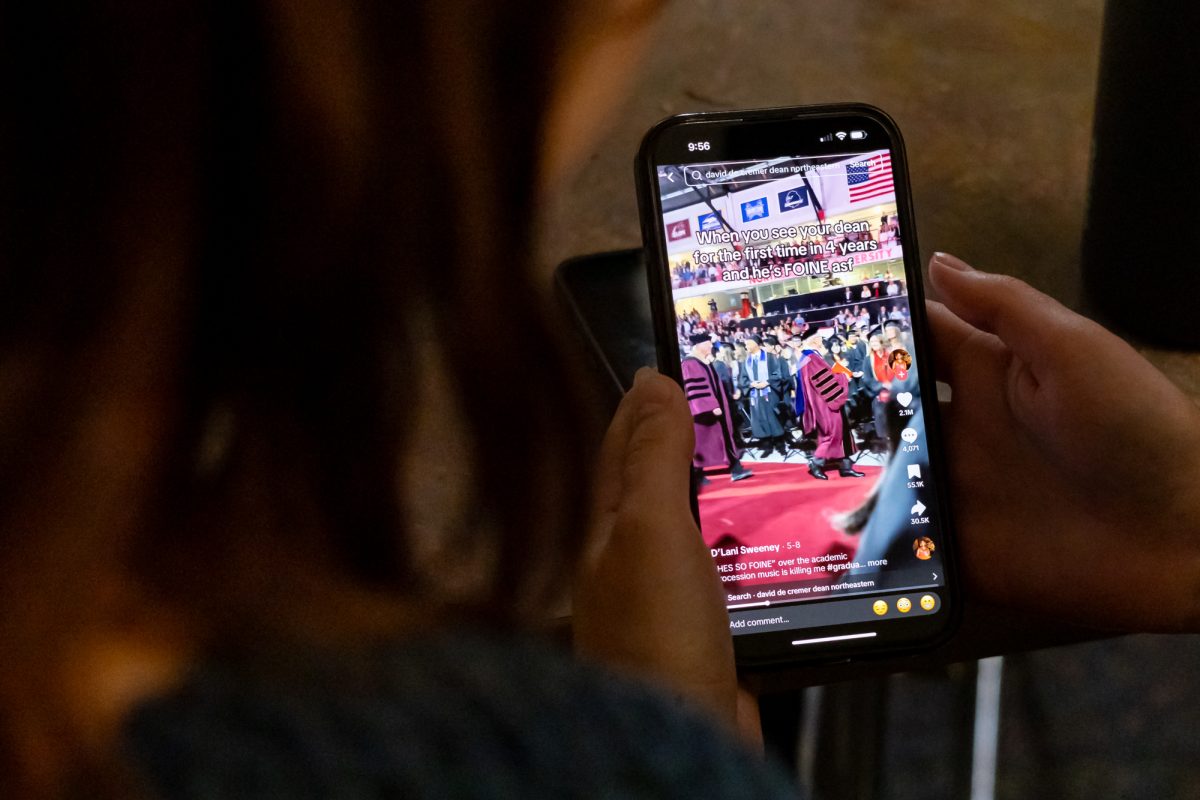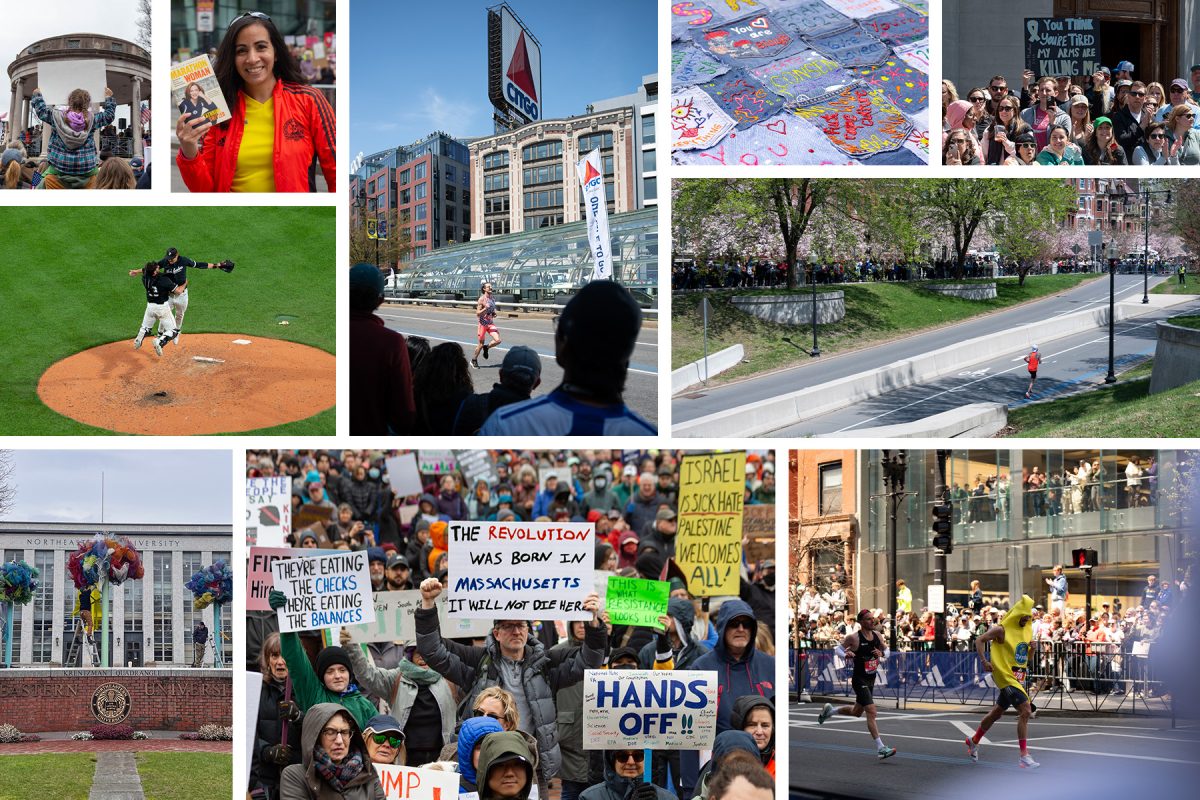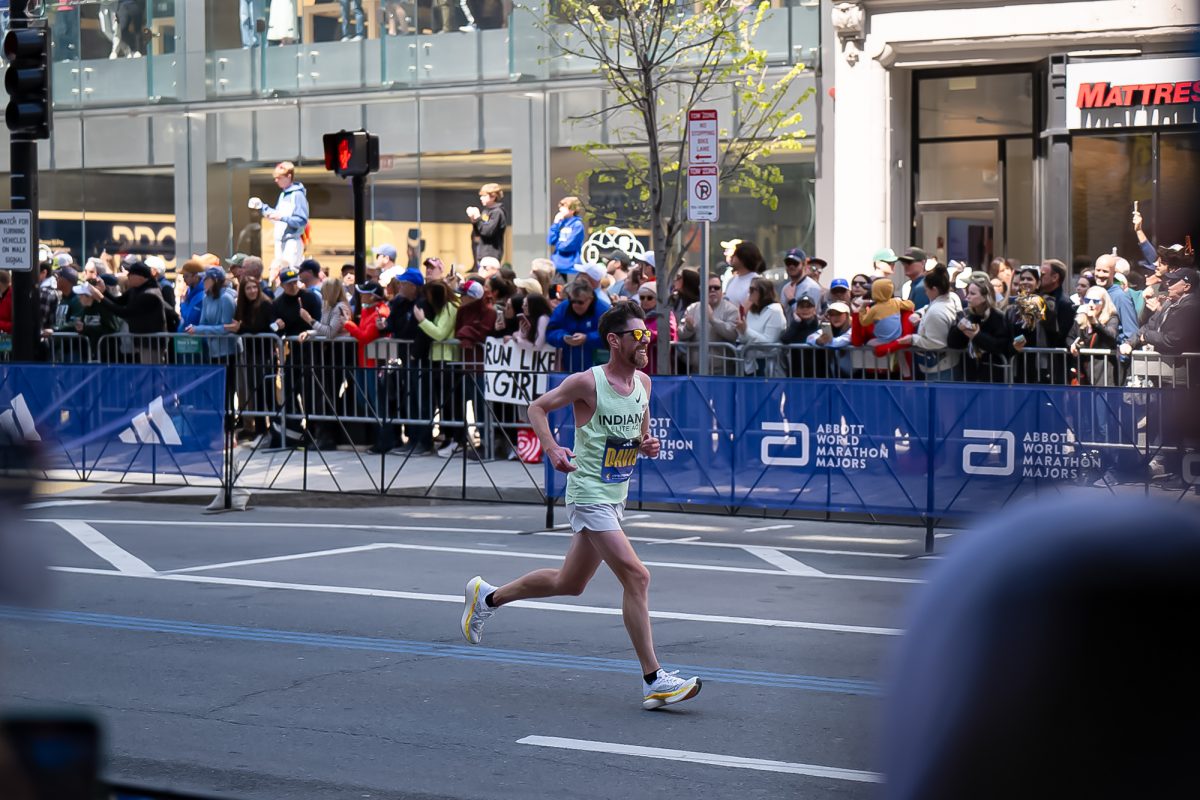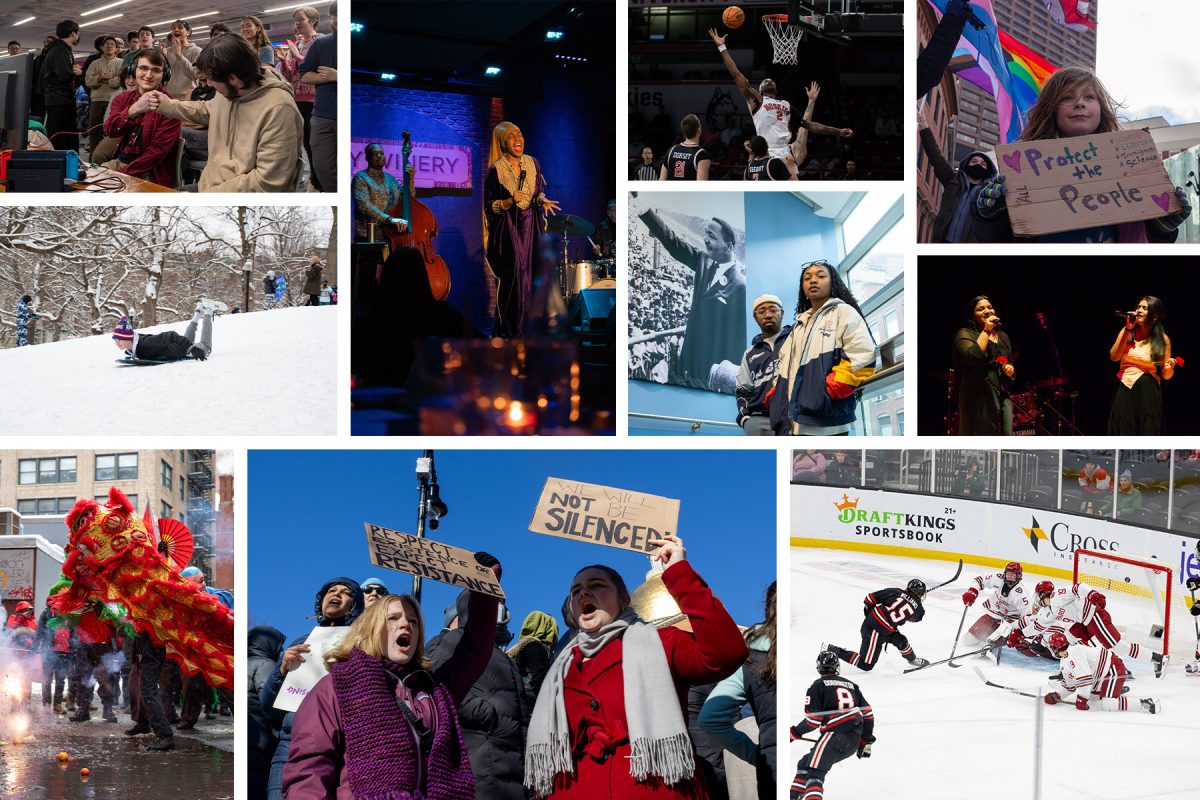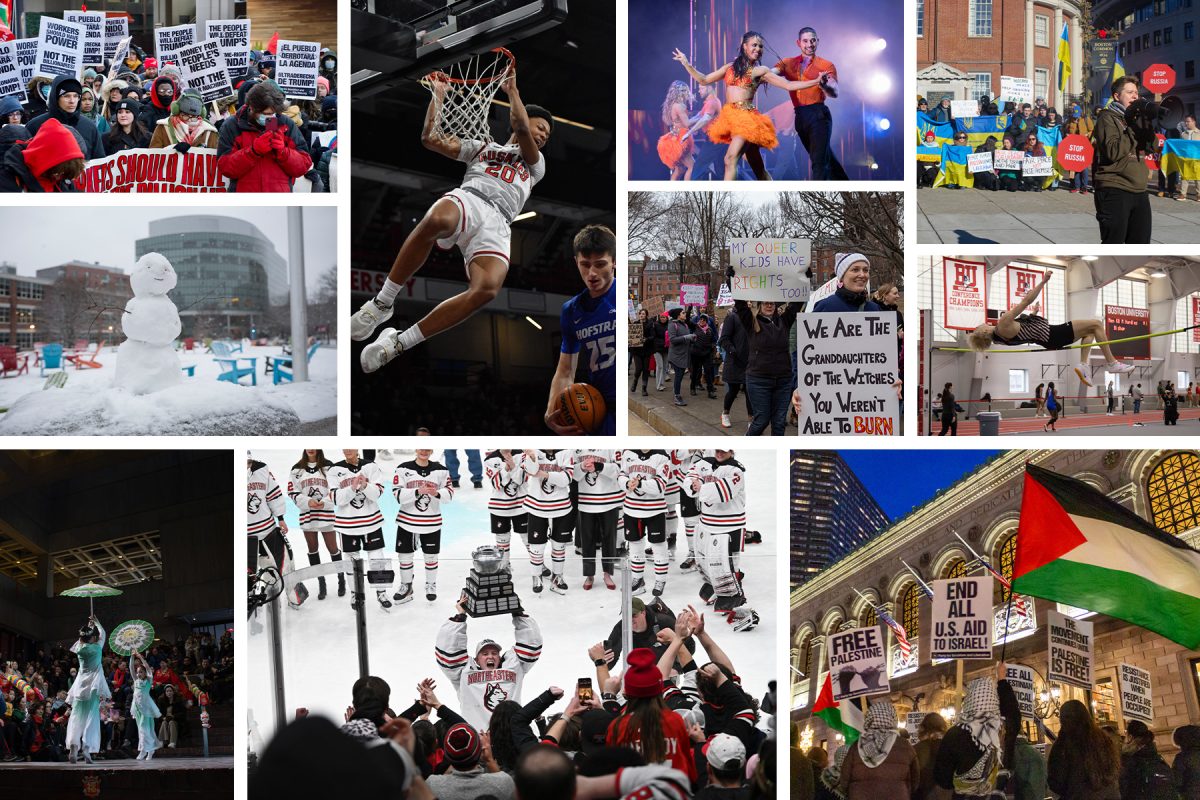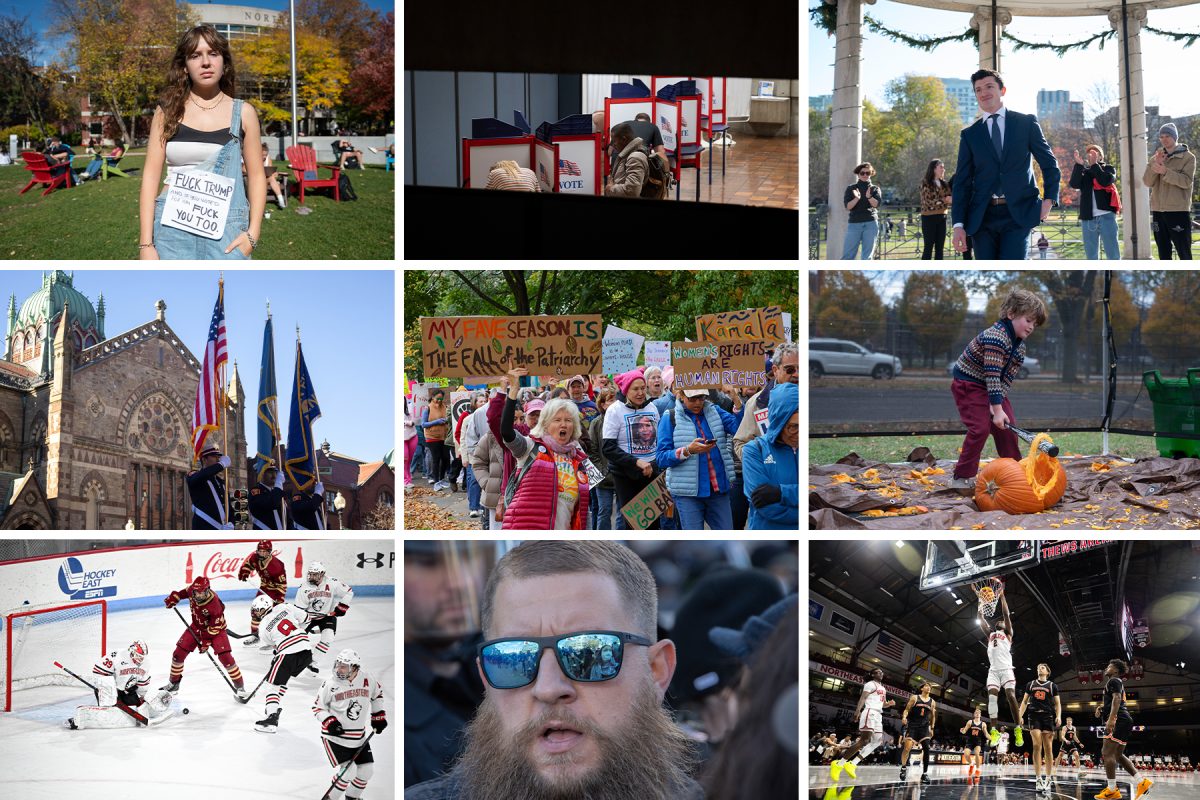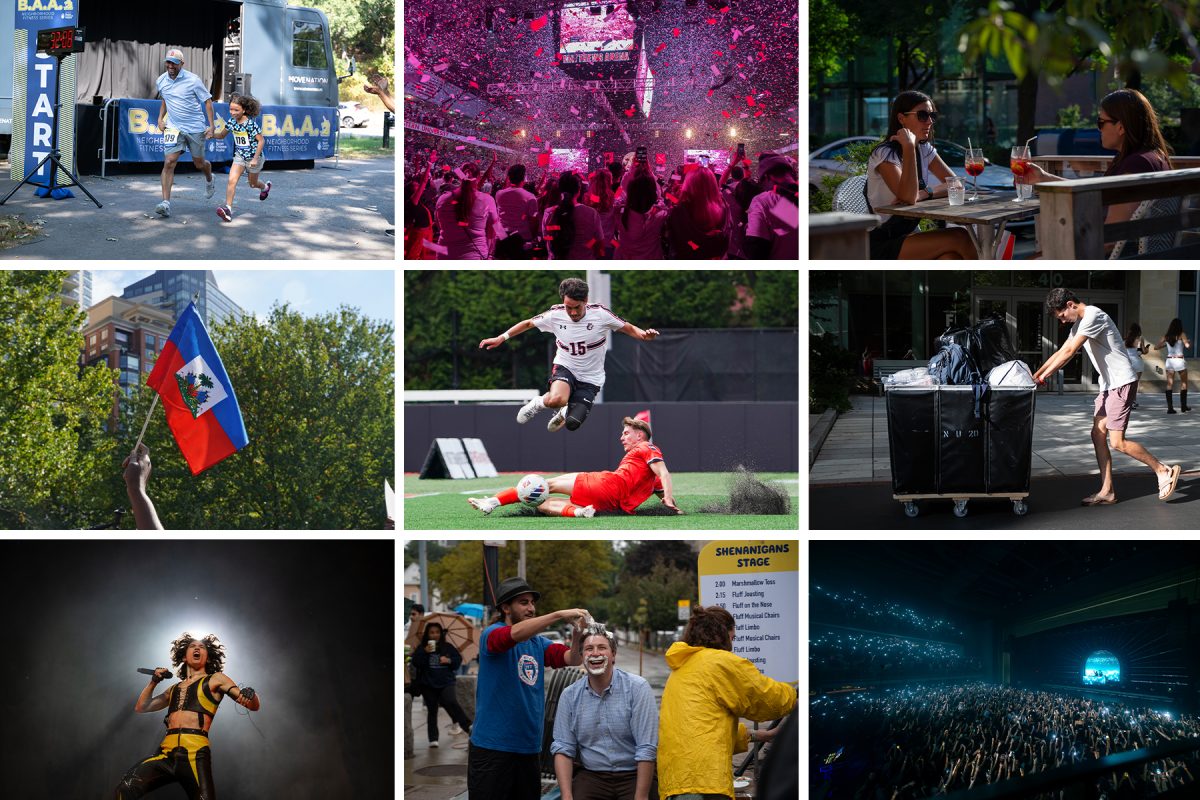By Casey Martin, news correspondent
On a breezy Saturday in Cambridge, everyone in Lesley University’s Roberts Gallery had at least one thing in common: A love for the art of printmaking.
Art teachers, students and enthusiasts of all ages gathered to appreciate printmaking work from artists across North America at the 2017 North American Print Biennial Saturday and Sunday, which dually celebrated the 70th anniversary of the Boston Printmakers organization. Juror Judith Brodie, a curator at the National Gallery in Washington, D.C., sifted through more than 1,900 entries to choose 96 prints for the biennial exhibition.
Richard Zauft, dean of the College of Art and Design at Lesley University, welcomed everyone to the gallery opening, and introduced Brodie to speak about her process of choosing the prints.
Brodie said many of the prints chosen for the gallery were relief prints, or woodcuts and linocuts, as opposed to other more modern forms of printmaking such as screen printing or digital printing.
“We seem to be witnessing a rise in the number of artists making arresting woodcuts and linocuts today — a rise that might strike some as oddly anachronistic in the digital age,” Brodie said. “Is the apparent upsurge nothing more than a Luddite reaction to technological change? Or does it reflect an almost stubborn delight in returning to that which is outmoded?”
The answers to these questions seemed apparent through the artwork at the biennial. Maria Doering, an artist whose linocut piece entitled “The Adventurous Soul” was exhibited, said she relishes the physicality of printmaking.
“For me, it’s not satisfying if I’m not breaking a sweat while I’m doing it,” Doering said. “Any part of printmaking tends to be physical.”
Both Doering and Brodie said they appreciate the inherently hands-on and laborious carving of relief prints.
While nearly 50 percent of the gallery exhibited relief prints, other prints on display represented a variety of techniques, including etching, mezzotint, lithography and combination pieces. This range illustrated the extent of diverse art that can be produced under the umbrella of printmaking.
Some artists pushed the boundaries of modern and traditional printmaking, taking to new mediums to invoke different interpretations of their work. “Fortune Teller” by Amelia Hankin uses fabric and paper sculpture to create a three-dimensional screen printed piece. Another work by Eric Avery titled “Print Life: Neurogenesis, from Seed to Growth” actually grows real grass on it during the exhibition, with seeds sprouting through a woodcut relief of a brain.
Along with this varied collection of work from experienced and esteemed artists, the Boston Printmakers hosted a student print exhibition to highlight the work of collegiate art students from universities across New England.
One of these young artists was Hannah Eaton, a 20-year-old student at Lesley University, who said she was thrilled and humbled to have her work featured alongside other art students from different schools.
“Printmaking is so incredibly versatile and there’s no limit to what you can do, which you can see from this show,” Eaton said, gesturing to the many student pieces that filled the room.
Both the biennial and the student exhibition bustled with excitement throughout Saturday afternoon, and the wide-ranging scope of work seemed to resonate with many who wandered through.
“There’s a lot of visual wisdom to enjoy in these two shows,” Zauft said.


